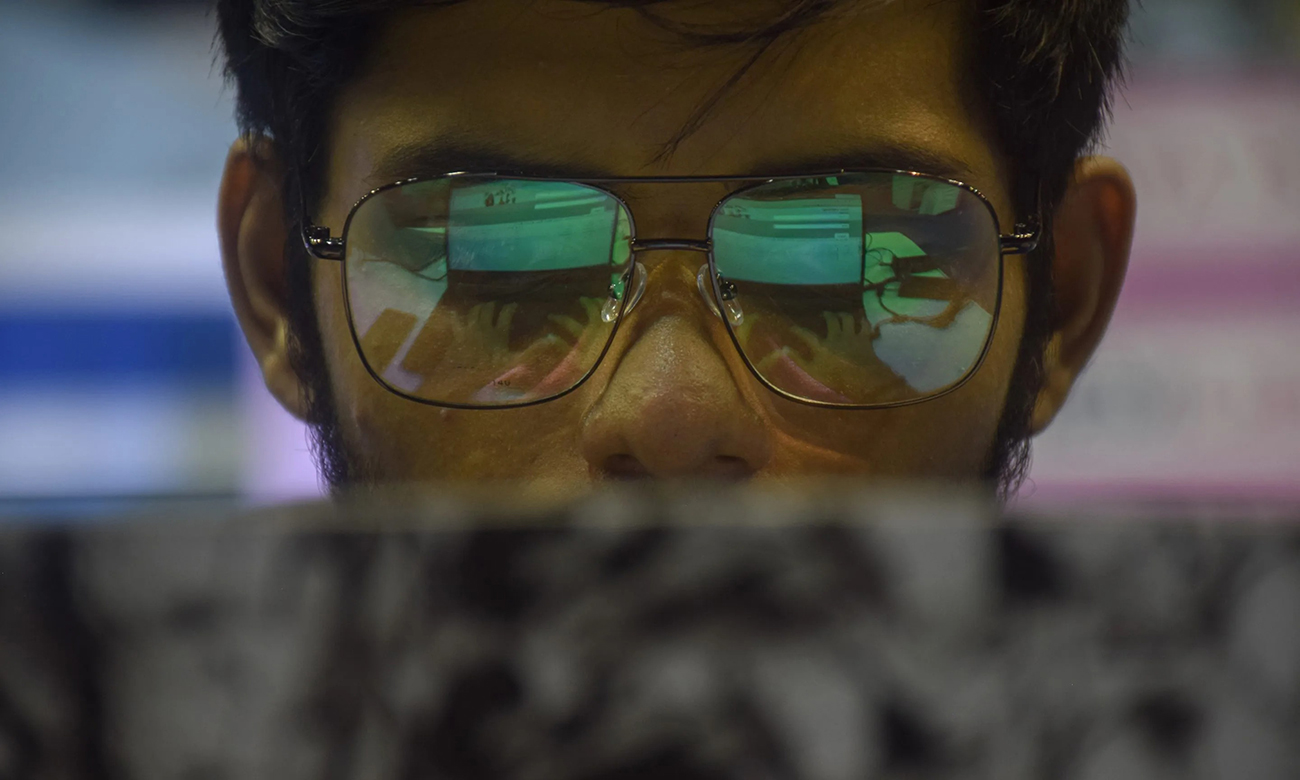
如果20年前,有人跟我說我要負責保證食品雜貨店庫存充足,公共交通按時刻表正常運行,加油站供應充足,我會很疑惑自己從事的到底是什么職業。
20年前,我所從事的是與今天一樣的工作,是一名數字取證和網絡安全事件響應人員。當時,我的主要工作是保護企業和消費者的數據,避免它們落入壞人手中。沒有人擔心物理世界受到的影響。但現在,這些不同體驗因為一種共同的特征相互關聯:它們的運行都依賴(數字和物理)網絡連接。而20年前盜竊信用卡數據的網絡犯罪分子,正在對這些網絡發起攻擊。
網絡攻擊帶來的風險發生了巨大變化。多年來,從在美國空軍服役到為電信業巨頭的客戶服務,再到現在領導和培訓下一代網絡一線響應人員,我曾阻止了數以千計的網絡攻擊。我想說的是,這些變化已經并將繼續影響所有人,影響的規模之大可能超出我們的想象。
物理世界和數字世界正在逐漸融合,而網絡威脅現在也蔓延到了“現實世界”。我們的任務不只是防止數據落入壞人手中,或者信用卡數據被盜。現在的網絡攻擊都經過了精心策劃,目的是實現物理破壞和運行停機,通常針對全球重要的服務:據美國聯邦調查局(FBI)披露,2021年,16個關鍵基礎設施行業中,有14個遭到了勒索軟件攻擊。
攻擊就發生在我們眼前,只是我們并沒有“切身體會”。 2022年,一次勒索軟件攻擊導致德國數百座加油站停止服務。英國最近挫敗了一次對其交通樞紐的攻擊。在戰爭時期,網絡越來越多地變成了一種主要工具,盡管我們尚未看到它充分展現威力。
隨著威脅日益升級,人們對網絡安全防護人員提出的要求也越來越高。現在,如果不能防御網絡攻擊,會對經濟產生嚴重影響,妨礙普通市民使用重要的日常服務。
風險不止于此……
網絡事件的影響會迅速擴散,但令人擔憂的是,全球掌握網絡防御技能的人才卻依舊嚴重不足。最近一項全球調查發現,68%的網絡事件響應人員普遍要同時應對兩個甚至更多攻擊。許多公司一旦遭遇網絡危機,不可避免會面臨無人可用的窘境。
簡而言之,事件響應人員的數量嚴重不足。
盡管如此,他們仍然堅守在一線。數據顯示,他們依舊承受了巨大的精神壓力,通常不堪重負。事實上,勒索軟件這種破壞性攻擊加劇了網絡一線響應人員的壓力和心理素質要求。許多人由于所從事的應對網絡安全威脅的工作性質,必須尋求心理健康協助。
全世界越來越依賴這些事件響應人員,只是我們還沒有充分意識到他們的重要性。然而,如果我們不現在行動起來支持他們,并創建一個人才庫,以滿足未來必然更大的網絡需求,當新的數字陣地遭遇攻擊的時候,我們可能會措手不及。
我們必須將事件響應作為一種數字交匯的應急服務,并承認網絡響應人員所承受的巨大壓力和高壓的工作環境。雖然我們看到他們的服務意識比這些挑戰更重要,但公司以及網絡安全行業必須執行可持續的支持結構,以避免事件響應人員出現職業倦怠。首先在為防御網絡安全做準備,以及圍繞資源和條件進行規劃時,要將事件響應人員和他們面臨的挑戰考慮在內。
政府和私人行業必須加大對公眾的教育,宣傳網絡安全的重要性,以及事件響應人員的關鍵使命。為了培養下一代網絡安全一線防御人員,人們必須知道這個職業路徑的存在。我們看到幫助人們規劃網絡職業的項目越來越多,例如DHS CISA的“在網絡中看到自己”計劃。這需要各方共同努力,將該領域內不同學科的教育與網絡安全培訓路徑相結合。例如,IBM正在與20所傳統黑人高校合作,幫助他們建立網絡安全領導力中心(Cybersecurity Leadership Centers)。
無論是在幕后打擊網絡犯罪分子,拔掉服務器機房的插座以防止攻擊不可控的傳播,還是在作戰室出謀劃策,事件響應人員都在夜以繼日地,默默守護著我們的現代生活方式。問題是,我們是否為他們提供了足夠多的支持?(財富中文網)
本文作者勞倫斯·戴恩為IBM X-Force部門全球網絡事件響應負責人。
Fortune.com上發表的評論文章中表達的觀點,僅代表作者本人的觀點,并不代表《財富》雜志的觀點和信仰。
翻譯:劉進龍
審校:汪皓
如果20年前,有人跟我說我要負責保證食品雜貨店庫存充足,公共交通按時刻表正常運行,加油站供應充足,我會很疑惑自己從事的到底是什么職業。
20年前,我所從事的是與今天一樣的工作,是一名數字取證和網絡安全事件響應人員。當時,我的主要工作是保護企業和消費者的數據,避免它們落入壞人手中。沒有人擔心物理世界受到的影響。但現在,這些不同體驗因為一種共同的特征相互關聯:它們的運行都依賴(數字和物理)網絡連接。而20年前盜竊信用卡數據的網絡犯罪分子,正在對這些網絡發起攻擊。
網絡攻擊帶來的風險發生了巨大變化。多年來,從在美國空軍服役到為電信業巨頭的客戶服務,再到現在領導和培訓下一代網絡一線響應人員,我曾阻止了數以千計的網絡攻擊。我想說的是,這些變化已經并將繼續影響所有人,影響的規模之大可能超出我們的想象。
物理世界和數字世界正在逐漸融合,而網絡威脅現在也蔓延到了“現實世界”。我們的任務不只是防止數據落入壞人手中,或者信用卡數據被盜。現在的網絡攻擊都經過了精心策劃,目的是實現物理破壞和運行停機,通常針對全球重要的服務:據美國聯邦調查局(FBI)披露,2021年,16個關鍵基礎設施行業中,有14個遭到了勒索軟件攻擊。
攻擊就發生在我們眼前,只是我們并沒有“切身體會”。 2022年,一次勒索軟件攻擊導致德國數百座加油站停止服務。英國最近挫敗了一次對其交通樞紐的攻擊。在戰爭時期,網絡越來越多地變成了一種主要工具,盡管我們尚未看到它充分展現威力。
隨著威脅日益升級,人們對網絡安全防護人員提出的要求也越來越高。現在,如果不能防御網絡攻擊,會對經濟產生嚴重影響,妨礙普通市民使用重要的日常服務。
風險不止于此……
網絡事件的影響會迅速擴散,但令人擔憂的是,全球掌握網絡防御技能的人才卻依舊嚴重不足。最近一項全球調查發現,68%的網絡事件響應人員普遍要同時應對兩個甚至更多攻擊。許多公司一旦遭遇網絡危機,不可避免會面臨無人可用的窘境。
簡而言之,事件響應人員的數量嚴重不足。
盡管如此,他們仍然堅守在一線。數據顯示,他們依舊承受了巨大的精神壓力,通常不堪重負。事實上,勒索軟件這種破壞性攻擊加劇了網絡一線響應人員的壓力和心理素質要求。許多人由于所從事的應對網絡安全威脅的工作性質,必須尋求心理健康協助。
全世界越來越依賴這些事件響應人員,只是我們還沒有充分意識到他們的重要性。然而,如果我們不現在行動起來支持他們,并創建一個人才庫,以滿足未來必然更大的網絡需求,當新的數字陣地遭遇攻擊的時候,我們可能會措手不及。
我們必須將事件響應作為一種數字交匯的應急服務,并承認網絡響應人員所承受的巨大壓力和高壓的工作環境。雖然我們看到他們的服務意識比這些挑戰更重要,但公司以及網絡安全行業必須執行可持續的支持結構,以避免事件響應人員出現職業倦怠。首先在為防御網絡安全做準備,以及圍繞資源和條件進行規劃時,要將事件響應人員和他們面臨的挑戰考慮在內。
政府和私人行業必須加大對公眾的教育,宣傳網絡安全的重要性,以及事件響應人員的關鍵使命。為了培養下一代網絡安全一線防御人員,人們必須知道這個職業路徑的存在。我們看到幫助人們規劃網絡職業的項目越來越多,例如DHS CISA的“在網絡中看到自己”計劃。這需要各方共同努力,將該領域內不同學科的教育與網絡安全培訓路徑相結合。例如,IBM正在與20所傳統黑人高校合作,幫助他們建立網絡安全領導力中心(Cybersecurity Leadership Centers)。
無論是在幕后打擊網絡犯罪分子,拔掉服務器機房的插座以防止攻擊不可控的傳播,還是在作戰室出謀劃策,事件響應人員都在夜以繼日地,默默守護著我們的現代生活方式。問題是,我們是否為他們提供了足夠多的支持?(財富中文網)
本文作者勞倫斯·戴恩為IBM X-Force部門全球網絡事件響應負責人。
Fortune.com上發表的評論文章中表達的觀點,僅代表作者本人的觀點,并不代表《財富》雜志的觀點和信仰。
翻譯:劉進龍
審校:汪皓
If you had told me 20 years ago that today I’d be charged with making sure that grocery stores remain stocked, public transportation schedules are running, and gas pumps are full, I’d be very confused as to what line of work I ended up in.
All those years ago, I had the same job I do today, as a digital forensic and cybersecurity incident responder. Back then, I focused on keeping corporate and consumer data from falling into bad actors’ hands. Concerns for physical implications were non-existent. Today, there’s a common trait connecting these seemingly disparate experiences to each other: they all rely on (digital and physical) network connections to operate. And those networks are under attack from the same cybercriminals that were stealing credit card data 20 years ago.
The stakes have changed drastically when it comes to cyberattacks. I’ve fended off thousands of cyberattacks over the years, from my service in the United States Air Force to defending clients of telecommunication giants and now leading and training the next generation of cyber frontline responders–and I’m telling you that change has and will continue to impact us all, potentially at a scale we can’t comprehend.
The physical and digital worlds are merging, and cyber threats are now crossing over into the “real world.” It’s no longer just about keeping data from falling into the wrong hands or credit card data being stolen. Cyberattacks today are engineered to achieve physical disruption and operational downtime, usually targeting the world’s critical services: The?FBI revealed that in 2021, 14 of 16 critical infrastructure sectors were attacked with ransomware.
It’s happening before our eyes, it just hasn’t “hit us” yet. In 2022, a ransomware attack resulted in interrupting services at hundreds of gas stations in Germany. The U.K. recently thwarted an attack on its transportation links. Cyber has grown into a staple tool used during warfare, although we have yet to see its full extent materialize.
As threats evolve, so is what’s being asked of those defending against them. Today failing to hold the line against cyberattacks can have a material impact on the economy and access to essential day-to-day services for citizens.
But that’s not the only thing at stake…
As cyber incidents quickly multiply, what’s worrisome is that the men and women with the skills to defend against them are still in very short supply worldwide. A recent global study found that it’s common for 68% of incident responders to have to defend against two or more attacks simultaneously. Inevitably, many businesses are left without manpower in the face of a cyber crisis.
Simply put, incident responders are outnumbered.
Even so, they are still showing up, often overwhelmed, pushing through a considerable mental strain according to the data. In fact, disruptive attacks like ransomware have exacerbated the pressure and psychological demands of cyber frontline responders. Many are seeking out mental health assistance because of the very nature of responding to cyberattacks.
The world is becoming increasingly reliant on these teams, even if it’s still largely unaware of their importance. However, if we do not take measures today to support them as well as create a talent funnel that can meet tomorrow’s inevitably larger cyber needs, we will find ourselves unprepared to defend the new digital front line.
We must recognize the nature of incident response as an emergency service for digital intersections and acknowledge the immense pressure and high stress scenarios cyber responders are constantly up against. While we see their sense of service overriding these challenges, businesses–and the cybersecurity industry itself–must put in place sustainable support structures to avoid incident response burnout. That starts with considering incident responders and–the challenges they face–when preparing for cyberattacks, and planning around those resources and conditions.
Governments and private industry must invest more in educating the public about the material and direct importance of cybersecurity, as well as the critical mission of incident responders. To build up the next generation of cyber frontline defenders, people must know this career path even exists. We’re beginning to see more dedicated efforts to help people envision themselves in cyber, like DHS CISA’s “See yourself in cyber” initiative. This must be a collective undertaking that couples education on the diverse disciplines within the field with pathways to cybersecurity training. For example, IBM is?collaborating with 20 Historically Black Colleges and Universities to help them establish Cybersecurity Leadership Centers.
Whether they’re kicking cybercriminals off networks behind screens, pulling out plugs in server rooms to stop an uncontrollable spread of attacks, or strategizing in war rooms, incident responders are silently defending our modern way of life–day in and day out. The question is, are we doing enough to support them?
Laurance Dine is the global lead of incident response at IBM X-Force.
The opinions expressed in Fortune.com commentary pieces are solely the views of their authors and do not necessarily reflect the opinions and beliefs of Fortune.






